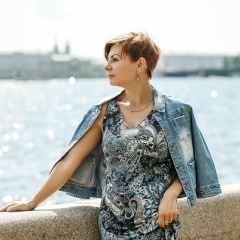Немного о Сантьяго. Столица Чили находится у самого подножья Анд, и весь город окружен горами и холмами, куда ни посмотришь – взгляд упирается в очередную вершину. В общем-то, во всем Чили так, эта страна явно не для страдающих клаустрофобией.
Население Сантьяго – 6 миллионов, город поделен на множество коммун, у каждой свой мэр. Проживание в той или иной коммуне говорит о социальном статусе человека. Первое что спрашивают при знакомстве или устройстве на работу – где ты живешь? и ответ действительно имеет значение. Чем ближе к Андам, тем престижнее районы и богаче люди. Существует даже негласная черта, проходящая по одной из площадей города – по одну сторону от нее – прилично, по другую – так себе. Как ни странно, исторический центр Сантьяго находится вне «приличных» районов, жить в центре совсем не престижно. Днем он выглядит вполне нормально – там сплошные офисы, полно людей в деловых костюмах, жизнь кипит. Но по вечерам и в выходные офисные работники исчезают, все закрывается, и откуда-то выползают бедные перуанские иммигранты, рассаживаются по тротуарам и что-то продают, либо просто тусуются. Архитектура в центре совсем обычная – сейчас я привыкла, но вначале помню свое разочарование – никаких миленьких домиков, маленьких уютных улочек, не говоря уже о дворцах и соборах. Точнее, все это присутствует, но то тут то там, нет единого ансамбля: вроде и видишь иногда красивое здание, но рядом – оп, и портит весь вид современная бетонная коробка. Старинных зданий тоже почти нет – все датируется концом 19 – началом 20 века: частые землетрясения не дали сохранить никакого наследия.
Но порадоваться красивым видам в Сантьяго все-таки можно – в районе под названием Санхеттэн (одноименный коктейль тоже имеется). Там современные стеклянные бизнес-центры причудливой формы соседствуют с красивыми парками и скверами. А чуть в стороне возвышается самый высокий небоскреб в Латинской Америке. Да и в моем районе, в самом начале «приличных», тоже все радует глаз – зеленые аллеи, велосипедные дорожки, дома с ухоженными садиками, везде цветы и пальмы. И ощущение небольшого спокойного городка.
Население Сантьяго – 6 миллионов, город поделен на множество коммун, у каждой свой мэр. Проживание в той или иной коммуне говорит о социальном статусе человека. Первое что спрашивают при знакомстве или устройстве на работу – где ты живешь? и ответ действительно имеет значение. Чем ближе к Андам, тем престижнее районы и богаче люди. Существует даже негласная черта, проходящая по одной из площадей города – по одну сторону от нее – прилично, по другую – так себе. Как ни странно, исторический центр Сантьяго находится вне «приличных» районов, жить в центре совсем не престижно. Днем он выглядит вполне нормально – там сплошные офисы, полно людей в деловых костюмах, жизнь кипит. Но по вечерам и в выходные офисные работники исчезают, все закрывается, и откуда-то выползают бедные перуанские иммигранты, рассаживаются по тротуарам и что-то продают, либо просто тусуются. Архитектура в центре совсем обычная – сейчас я привыкла, но вначале помню свое разочарование – никаких миленьких домиков, маленьких уютных улочек, не говоря уже о дворцах и соборах. Точнее, все это присутствует, но то тут то там, нет единого ансамбля: вроде и видишь иногда красивое здание, но рядом – оп, и портит весь вид современная бетонная коробка. Старинных зданий тоже почти нет – все датируется концом 19 – началом 20 века: частые землетрясения не дали сохранить никакого наследия.
Но порадоваться красивым видам в Сантьяго все-таки можно – в районе под названием Санхеттэн (одноименный коктейль тоже имеется). Там современные стеклянные бизнес-центры причудливой формы соседствуют с красивыми парками и скверами. А чуть в стороне возвышается самый высокий небоскреб в Латинской Америке. Да и в моем районе, в самом начале «приличных», тоже все радует глаз – зеленые аллеи, велосипедные дорожки, дома с ухоженными садиками, везде цветы и пальмы. И ощущение небольшого спокойного городка.
A little about Santiago. The capital of Chile is located at the very foot of the Andes, and the whole city is surrounded by mountains and hills, wherever you look - the gaze rests on the next peak. In general, throughout Chile, this country is clearly not for those suffering from claustrophobia.
The population of Santiago is 6 million, the city is divided into many communes, each with its own mayor. Living in a particular commune speaks of a person's social status. The first thing they ask when meeting or getting a job is where do you live? and the answer really matters. The closer to the Andes, the more prestigious areas and richer people. There is even an unspoken line running along one of the city squares - on one side of it - decently, on the other - so-so. Oddly enough, the historic center of Santiago is located outside the "decent" areas, living in the center is not at all prestigious. During the day, he looks quite normal - there are continuous offices, full of people in business suits, life is in full swing. But in the evenings and on weekends, office workers disappear, everything closes, and poor Peruvian immigrants creep out from somewhere, sit on the sidewalks and sell something, or just hang out. The architecture in the center is quite ordinary - now I'm used to it, but at first I remember my disappointment - no pretty houses, small cozy streets, not to mention palaces and cathedrals. More precisely, all this is present, but here and there, there is no single ensemble: it seems that you sometimes see a beautiful building, but next to it, a modern concrete box spoils the whole view. There are almost no old buildings either - everything dates from the late 19th - early 20th centuries: frequent earthquakes did not allow any heritage to be preserved.
But you can still enjoy the beautiful views in Santiago - in the area called Sanhattan (there is also a cocktail of the same name). There, modern glass business centers of bizarre shape coexist with beautiful parks and squares. And a little to the side is the tallest skyscraper in Latin America. And in my area, at the very beginning of "decent", everything is also pleasing to the eye - green alleys, bike paths, houses with well-groomed gardens, everywhere flowers and palms. And the feeling of a small quiet town.
The population of Santiago is 6 million, the city is divided into many communes, each with its own mayor. Living in a particular commune speaks of a person's social status. The first thing they ask when meeting or getting a job is where do you live? and the answer really matters. The closer to the Andes, the more prestigious areas and richer people. There is even an unspoken line running along one of the city squares - on one side of it - decently, on the other - so-so. Oddly enough, the historic center of Santiago is located outside the "decent" areas, living in the center is not at all prestigious. During the day, he looks quite normal - there are continuous offices, full of people in business suits, life is in full swing. But in the evenings and on weekends, office workers disappear, everything closes, and poor Peruvian immigrants creep out from somewhere, sit on the sidewalks and sell something, or just hang out. The architecture in the center is quite ordinary - now I'm used to it, but at first I remember my disappointment - no pretty houses, small cozy streets, not to mention palaces and cathedrals. More precisely, all this is present, but here and there, there is no single ensemble: it seems that you sometimes see a beautiful building, but next to it, a modern concrete box spoils the whole view. There are almost no old buildings either - everything dates from the late 19th - early 20th centuries: frequent earthquakes did not allow any heritage to be preserved.
But you can still enjoy the beautiful views in Santiago - in the area called Sanhattan (there is also a cocktail of the same name). There, modern glass business centers of bizarre shape coexist with beautiful parks and squares. And a little to the side is the tallest skyscraper in Latin America. And in my area, at the very beginning of "decent", everything is also pleasing to the eye - green alleys, bike paths, houses with well-groomed gardens, everywhere flowers and palms. And the feeling of a small quiet town.



У записи 21 лайков,
2 репостов.
2 репостов.
Эту запись оставил(а) на своей стене Наталья Уткина









































